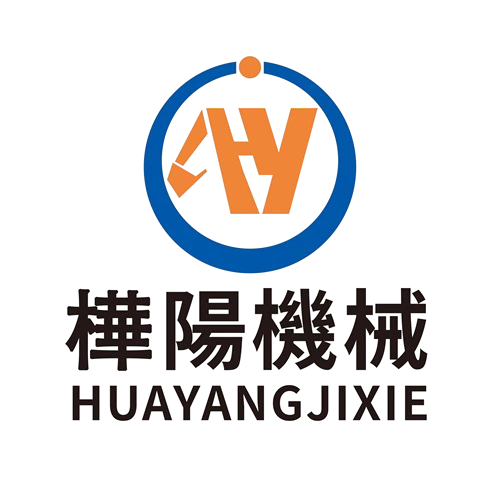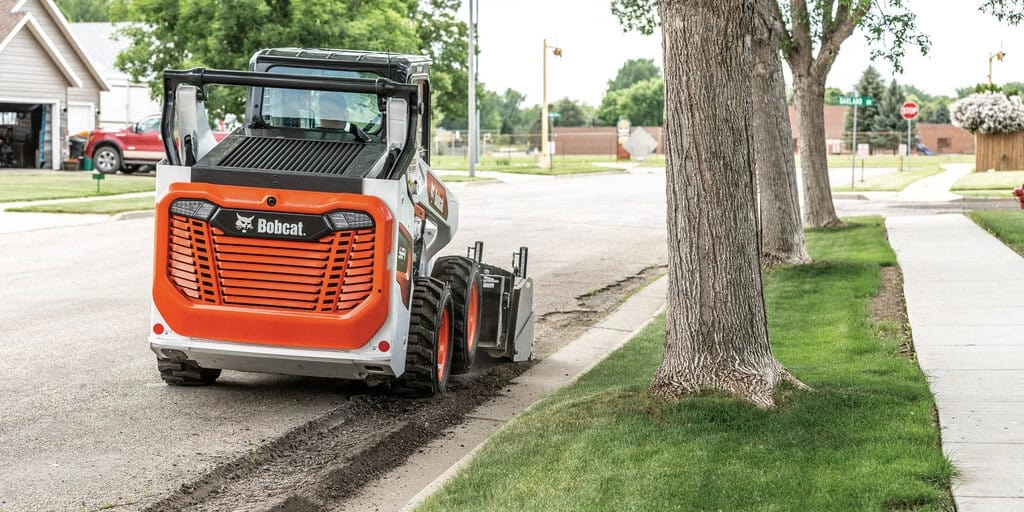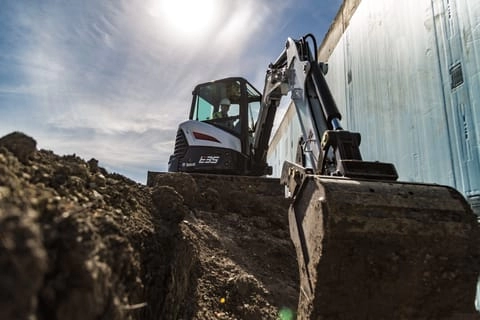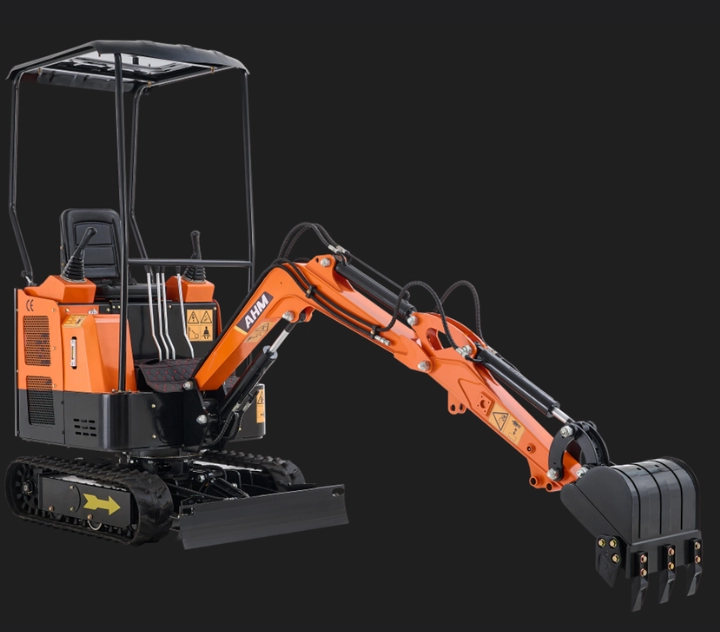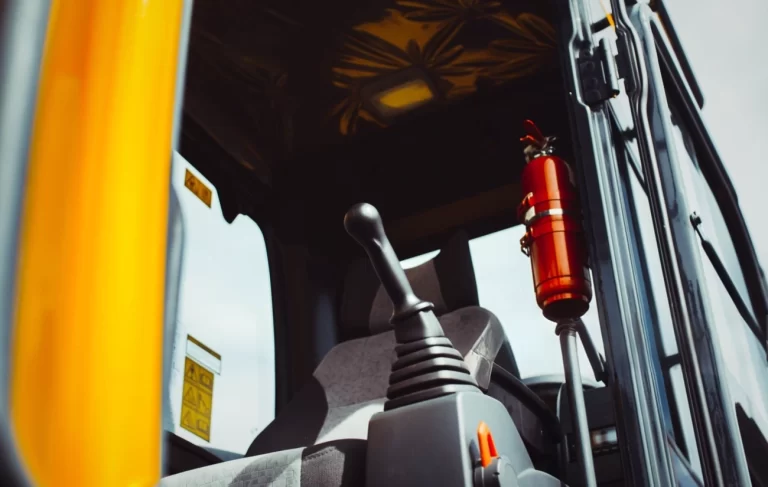-
Shandong Province, China
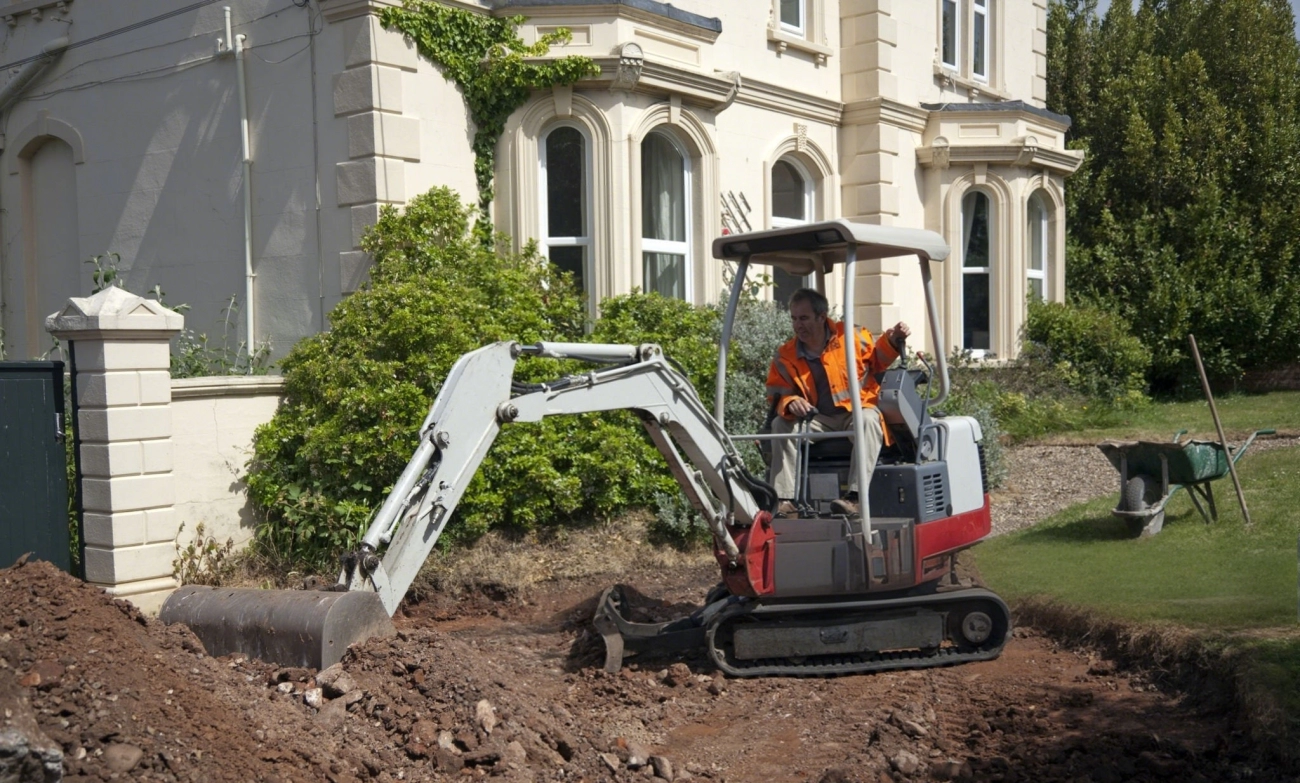
Mini Excavator vs. Skid-Steer Loader Buying Guide: Comparing Performance and Applications
What is a mini excavator?
Definition and main functions of mini excavators
A mini excavator is a small, tracked heavy machine designed for tight or space-constrained work environments.Main functions include excavation, demolition, land leveling, and trenchingIt combines flexibility and digging power, making it ideal for projects requiring precise operations, such as urban infrastructure construction and landscaping.
Typical size and operating range of mini excavators
The size of mini excavators is usually in0.8 metric tons to 2.0 metric tonsIt is a lightweight construction equipment suitable for small spaces that are difficult to reach manually. The machine is lightweight for easy transportation and maneuverability. During operation, its operating range includesexcavation depths of approximately 1.5 meters to 3 metersand can effectively complete small to medium-sized projects.
Common applications of mini excavators
Mini excavators are ideal for a diverse range of job requirements, including but not limited to:
- Trenching: Underground pipe or cable installation
- Excavating and moving soilEarthwork small-scale projects
- Planting and landscapingParks and residential gardening renovation
- Small demolition work:Demolishing brick and concrete structures
- Agricultural and light industrial applications:Soil tilling and improvement
These flexible work applications make mini excavators indispensable for small and medium-sized construction and landscaping projects in the United States market.Compact earthmoving equipment。
To learn more about different specifications and quotes, please refer to ourMini excavator product information, to directly grasp detailed specifications and pricing strategies.
In the diverse construction sites of Taiwan, mini excavators are favored by many owners and contractors for their excellentoperational flexibility, ease of relocation, and excavation efficiency.Especially in narrow environments where larger equipment cannot enter, mini excavators demonstrate their unique advantages.
Skid Steer Loader Definition and Main Functions
Skid Steer Loader, commonly known asSkid-steer loader, is a very versatile and compact small construction machine. Itsdesign is for the purpose of handling and loading materialsbut also perform a variety of construction tasks through various replaceable tools and accessories. Skid steer loaders are unique in that theirtracks or tires can rotate independently, providing excellent handling and steering flexibilitymaking them ideal for tight or space-constrained work environments.
Skid steer loader size design and operating range
The weight of a typical skid-steer loader is usuallybetween 1 and 2 tons, with compact dimensions for easy maneuverability on the job site. Itsheight and width are designed with space constraints in mind, allowing easy access to buildings or fenced areas.Its general operating range includes ground loading, handling construction materials, earthwork, and waste removal. It can also be equipped with various attachments to increase functionality, such as leveling, digging, or breaking concrete.
Common applications of skid steer loaders
- Loading and handling: Transporting sand, gravel, soil, building materials, etc., for quick loading or transport.
- Leveling and Trimming: Use a bulldozer blade or lightning disc attachment to level land and repair roads.
- Construction site cleaning: Use the sweeping brush attachment to clean the construction site and maintain safety and cleanliness.
- Other multi-functional construction: By changing different attachments, crushing, drilling, and stacking operations can be performed.
Skid steer loaders, with their versatility and agile operation, are in United Statessmall construction equipmentan indispensable main choice in the market, whether it is construction, landscaping, or owner's own use, it can improve work efficiency and effectively reduce labor burden.
For more information about small loaders and accessories, please refer to ourProduct PageLearn more.
Mini Excavator vs Skid Steer Loader: Key Differences Analyzed
In the selection of small construction machinery,Mini Excavator vs. Skid Steer LoaderAre undoubtedly two popular options. Understanding the differences in their design, function, and performance will help you choose the most suitable equipment according to your actual needs.
Design and Maneuverability Differences
Mini ExcavatorMostly designed with crawler tracks, the vehicle body is narrow and long, equipped with a flexible excavating arm and rotating platform, focusing on precise excavation and flexible operation in narrow spaces. The crawler chassis makes it more stable and provides better grip on soft, slippery, or uneven terrain.
Skid-steer loaderThese are mostly wheeled and have short bodies. Steering is achieved by directly "sliding" the tires left and right, allowing them to turn quickly in tight spaces, with excellent maneuverability, suitable for rapid transport and on-the-spot rotation.
Differences in excavation and loading capacity
Mini excavators' strengths areExcavation, trenching, and land exchange, can quickly complete excavation tasks with narrow depth and width, making it very suitable for detailed operations such as cable ducts and water pipe laying.
Skid steer loaders are used forloading, unloading, and ground levelingIt is mainly used for heavy loads and faster movement speeds, suitable for bulldozing, leveling, and site clearing. The load-bearing structure and multi-functional bucket can quickly respond to different handling needs.
Terrain adaptability
- The mini excavator's crawler chassis makes it perform excellently in muddy, sloping, and rugged roads, and it is not easy to get stuck.
- Skid steer loader tires work quickly on flat to mildly uneven terrain, but muddy or slippery ground may be more difficult.
Differences in Power and Hydraulic Systems
Mini excavators are equipped with hydraulic systems that focus on the digging arm, providing continuous and powerful digging force. Hydraulic power optimization enables precise control of deep digging and trenching operations.
In contrast, the hydraulic system of a skid-steer loader is designed for quick replacement of variousSkid-steer attachments (bucket, forks, etc.)It has diverse operational flexibility and is suitable for quickly responding to different on-site needs.
Attachment compatibility comparison
Mini excavator attachments focus on earthwork and drilling, such as:Auger, breaker, mainly assisting in deep excavation, demolition, and ground preparation work.
Skid-steer loader attachments are diverse, with multiple options such as forklift claws, sweeping brushes, and bulldozer blades in addition to standard buckets, enhancing operational versatility and making them especially suitable for multi-functional construction sites or the rental market.
Knowledge Summary
| Item | Mini Excavator | Skid-steer loader |
|---|---|---|
| Design | Crawler, rotating excavator arm | Wheeled, short body and can turn in place |
| Main function | Deep excavation, trenching, precision excavation | Loading, transporting, and ground leveling |
| Terrain adaptation | Advantage in muddy and rugged terrain | Good performance on flat, hard ground; weaker on slippery terrain |
| Power system | Enhanced digging hydraulic system | High-efficiency hydraulic conversion multiple attachments |
| Attachment diversity | Excavation-specific attachments (drills, breakers) | Numerous general-purpose loading tools (buckets, forklift claws, sweeper brushes, etc.) |
With these variance analyses, you can more clearly understand how to select the appropriateSmall construction machineryto increase work efficiency, reduce costs, and make the operation safer and smoother, based on land conditions and the nature of the work.
Mini Excavator vs Skid Steer Loader Performance Comparison
When selectinga mini excavatoror a skid steer loader, performance is an important indicator that cannot be ignored, especially forSkid-steer loader(Skid Steer Loader)時,性能是不可忽視的重要指標,特別是針對Digging depth and reach、Lifting capacity and load handling、Speed and maneuverabilityandFuel efficiency and operating costs。
Digging Depth and Reach Comparison
- Mini ExcavatorPossesses a clear excavation advantage because its design focuses on earthwork operations. Small excavators can typically achieve digging depths of 1.5 meters to over 3 meters, suitable for trench excavation, foundation construction, and garden tilling.
- In comparison,Skid Steer Loaderhas a limited reach, and while it can be fitted with digging attachments, it cannot compare to a small excavator in terms of depth and precise digging.
- Therefore, when it comes tounderground pipeline, cable installation, or detailed excavation in confined spacesThen, a small excavator is more suitable.
Lifting capacity and load handling
- Skid Steer LoaderThe greatest strength is handling and loading. It has a high lifting capacity and is suitable for handling building materials, cleaning up site waste, or doing leveling work.
- Although small excavators can be used with buckets, their lifting capacity and load weight are low, making them unsuitable for handling large quantities of materials.
- If your work requires frequent transport or loading, a skid-steer loader is the smarter choice.
Lineup speed and on-site maneuverability
- InFast movement and turning abilityaspect,Skid Steer LoaderUsually wins. It is designed to be small and flexible, and can easily turn on narrow construction sites or city streets.
- Small excavators have better stability on uneven or muddy ground due to their telescopic boom and crawler design, but are not as fast as skid steer loaders.
- Simply put, if the work environment is small and requires frequent movement, a skid steer loader will save more time and effort.
Fuel efficiency and operating costs
- Generally speaking,Small excavators consume a lot of fuel, because their hydraulic systems and excavation actions consume a lot of energy. But its work efficiency can make up for this, especially in specialized excavation tasks.
- Skid steer loaders have better fuel efficiency, because their design focuses on transportation and light operations.
- In terms of maintenance, both require regular inspection of hydraulic and engine systems, but skid steer loaders have a simpler structure and lower maintenance costs.
- In the United States market, considering fuel prices and maintenance expenses, choosing equipment that suits your work needs can effectively control long-term operating costs.
In conclusion, performance differences are reflected inSuitability for professional operations:
- Mini excavators excel in precise excavation and stable operation, making them suitable for deep digging and uneven terrain.
- Skid steer loaders emphasize flexibility, maneuverability, and material handling capabilities, making them more suitable for fast, diverse loading and leveling tasks.
Understanding these key performance aspects allows you to choose the most suitable equipment for small-scale projects, gardening, or infrastructure construction, improving work efficiency and reducing unnecessary expenses.
Mini Excavator vs Skid Steer Loader: Advantages and Limitations Analysis
Mini Excavator Advantages and Limitations
The most obvious advantage of a Mini Excavator Is focused on deep and precise excavation capabilities, especially suitable for narrow construction sites or scenarios requiring delicate operation:
- Strong digging depth, suitable for earthwork projects such as trenching and foundation excavation
- Large rotation rangeallowing for nearly 360-degree flexible operation without frequent machine movement
- Excellent operating visibilityfacilitating control of excavation details
- More fuel efficient, offering better fuel efficiency compared to large excavators
However, mini excavators also have shortcomings:
- Limited loading capacity, unable to handle excessively heavy materials or large amounts of earthwork
- Slower speed, not very convenient in venues that require rapid movement
- More restrictions on climbing and uneven terrain, more suitable for stable construction sites
Skid Steer Loader Advantages and Limitations
Skid Steer Loaders excel at quick loading and moving, making them a great helper for multi-functional sites:
- Abundant multi-functional attachmentsProficient in everything from bulldozing and shoveling to crushing and clearing.
- High degree of flexibility.Suitable for quick turning and movement in tight spaces.
- Strong load-bearing capacity and thrust., suitable for handling and cargo loading
- Excellent off-road capability, adaptable to various complex terrains
However, skid steer loaders also have limitations:
- Digging depth is not as good as an excavator, and it cannot completely replace detailed earthwork
- The operating field of vision is more limited, and the line of sight is easily affected by the mechanical structure
- Can easily cause ground damage, special attention should be paid to certain grasslands or delicate soil
Summary comparison
- If the requirement isFor detailed excavation, trenching, or foundation digging,a mini excavator is the recommended first choice.
- If the construction period emphasizesflexible handling, rapid loading, and multi-functional applications, a skid-steer loader might be a better choice.
Both have their applicable scopes in small-scale construction, municipal engineering, and gardening landscaping in the United States. Understanding the advantages and disadvantages can help you choose the equipment that best meets your budget and work needs.
Choose the right machine according to engineering needs
When choosing [mini excavators and skid-steer loaders], the most important thing is to make judgments based on different job natures and field conditions. The following summarizes the main project types to help you choose the most suitable models for the United States market.
Small construction site
Suitable for sites with tight spaces, most work includes trenching, foundation preparation, site leveling, etc.
- Mini Excavator Flexible excavation in small spaces, with sufficient depth and reach, suitable for jobs requiring precise excavation.
- Skid-steer loader Faster speed, suitable for handling sand, gravel, and building materials, allowing for rapid on-site movement but with limited digging power.
ConclusionFor small construction sites where precise excavation and trenching are crucial, mini excavators are the preferred choice; if the site requires efficient material handling and cleanup, skid-steer loaders are more suitable.
Landscaping and Gardening
In landscaping and beautification projects, construction sites are often irregular small spaces, and construction needs include digging holes for planting, laying pipelines, and soil tilling.
- Mini Excavator Possesses excellent digging capabilities, suitable for precise hole digging and root pruning.
- Skid-steer loader Multi-functional attachment support, such as buckets and sweepers, facilitates earthmoving and site cleanup.
Suggestion: For smaller sites requiring delicate excavation, choose a mini excavator; if focusing on material handling and site organization, a skid-steer loader is more flexible.
Demolition and waste removal
This type of work requires high strength and speed, often requiring the rapid removal of dismantled objects and debris.
- Skid-steer loader Equipped with a variety of heavy-duty attachments, such as crushers and grapples, providing powerful handling and clearing capabilities.
- Mini Excavator Although tools such as hydraulic breakers can be installed, the speed is slower and operation is more limited.
Conclusion: For demolition and waste handling, which emphasize speed and load capacity, skid-steer loaders are more efficient.
Utilities and excavation operations
Such as pipeline laying, cable installation, and trench excavation, require high excavation depth and precision.
- Mini Excavator Good stability, can achieve deeper excavation depths, and precise excavation.
- Skid-steer loader Limited excavation capacity, but performs well in pit filling and earthmoving.
Recommendation: Utility operations require deep digging and precise laying, making mini excavators the most suitable; for auxiliary handling, consider skid-steer loaders.
Be sure to evaluate the work environment and task priorities before choosing the most suitable model. The construction and landscaping market in the United States prefers flexible and versatile machinery, and we recommend checking out HYExcavator's range of mini excavator models. Small Excavator Product Details, to find the best solution for your project.
Cost Considerations Mini Excavator vs Skid Steer Loader Buying Guide
In selectionMini Excavatoror a skid steer loader, performance is an important indicator that cannot be ignored, especially forSkid-steer loaderWhen considering (Skid Steer Loader), cost is an important factor that cannot be ignored. Understanding the initial purchase price, maintenance and repair costs, and resale value of both is crucial for investing in equipment and improving investment efficiency in the United States market.
Initial Purchase Price Comparison
- Mini ExcavatorThe starting price is usually higher than a skid-steer loader because it is equipped with a professional hydraulic excavation system and a more complex structural design. Taking the 0.8-ton to 2.0-ton models commonly found in the United States market as an example, the price may range from NT$300,000 to NT$800,000, depending on the model and brand.
- Skid-steer loaderDue to its relatively simple design, the starting price is usually lower than that of a mini excavator, making it especially suitable for customers who need versatile on-site operations. The price range is approximately NT$200,000 to NT$600,000.
- HYExcavator'sMini ExcavatorAlthough the price is relatively mid-to-high, it offers excellent product innovation and a robust and durable design, making it a worthwhile long-term investment.
Overview of maintenance and repair costs
- Mini ExcavatorThe hydraulic system is precise, and maintenance costs are relatively high, especially when the hydraulic pump and control system fail. Regular replacement of hydraulic oil and filters is a necessary expense. The humid climate of Taiwan easily accelerates parts wear, so good maintenance is even more important.
- Skid-steer loaderMaintenance is simpler, the structure and drive system are relatively easy to maintain, and parts replacement and repair usually cost less. However, frequent use of high-load attachments will also increase the frequency of maintenance.
- Regular preventive maintenance and inspection are key to reducing the overall maintenance costs of both machines, especially in the construction environment in the United States.
Used residual value and durability
- Mini ExcavatorDue to its professional use and durability, it has a higher value retention rate in the used market. HYExcavator's products are considered trustworthy by many owners due to their durability and technical support, and the recovery price is more stable when resold.
- Skid-steer loaderAlthough flexible and versatile, the residual value is relatively low due to the large market supply and fierce competition.
- When considering future upgrades or equipment updates, durability and resale value are indicators worth evaluating in advance.
In summary,Mini excavators have obvious advantages in durability and professional performance, but the purchase and maintenance costs are higher.; andSkid steer loaders are more affordable in terms of initial investment and maintenance costs, suitable for multi-purpose applications, but their durability is relatively inferior to mini excavators.Based on the United States construction environment and budget, choosing the right equipment can effectively control overall costs while improving work efficiency.
Attachments and Versatility: A Comparison of Mini Excavators and Skid Steer Loaders
On construction and landscaping job sites in the United States, the versatility of a machine often determines work efficiency and cost-effectiveness. Whether it's amini excavatororSkid-steer loader, through variousRecommended attachments, which can greatly improve the applicability and flexibility of the machine. The following will explain the attachments of the two in detail and analyze how the attachments affect the overall versatility of the machine.
Common attachments for mini excavators
Mini excavators are known for their precise excavation capabilities and are especially suitable for many small construction sites in the United States. Popular attachments include:
- Augers: Fast drilling, suitable for projects such as tree planting and fence post installation.
- Breakers: Used for concrete or hard rock crushing to improve removal efficiency.
- Grabs: Facilitates the handling of waste or irregular objects.
- Hydraulic Pliers (Thumbs): Enhance gripping ability, suitable for complex operations.
These attachments allow mini excavators toExcavate, drill, demolishPlays multiple roles in work, especially in detailed work and narrow spaces.
Skid Steer Loader Popular Attachments
Skid steer loaders are favored for their maneuverability and load-bearing capacity. Common attachments are as follows:
- Multi-Purpose BucketsFrom standard buckets and grading buckets to rock buckets, meeting earthmoving and leveling needs.
- Pallet ForksSuitable for moving building materials, lumber, and palletized goods.
- Box Blades: Used for land leveling and road paving.
- Sweeper brush (Brooms): Facilitates on-site cleanup and dust management.
These attachments give skid-steer loaders excellentLoading, transporting, and cleaningFunctions, suitable for varied and fast-paced work rhythms.
The impact of attachments on versatility
- Improve work efficiency: Diverse attachments allow machines to quickly switch tasks without changing equipment, saving time and labor costs.
- Expanded range of use: Whether it's digging, moving, or landscaping, attachments allow the machine to adapt to more work styles.
- Reduce the number of on-site equipment: Reduce tool purchase and maintenance costs by using one machine with different attachments.
- Increase the value and flexibility of machinery: Versatility brings higher return on investment, especially suitable for United States small and medium-sized enterprises and leasing markets.
In summary, selecting the appropriate attachments is the key to improving mini excavators and skid steer loadersVersatility and flexibility are keyIn the United States usage environment, configure accessories according to construction site requirements to maximize the efficiency of the machinery and make work more efficient, safe, and labor-saving.
Safety and Operating Comfort Mini Excavator vs Skid Steer Loader Buying Guide
On construction sites in the United States, operational safety and operator comfort are the choicesMini Excavator:orSkid Steer LoaderAn important factor that cannot be ignored. Understanding the differences between the two in terms of ergonomic design, safety equipment, and training requirements allows you to choose more suitable equipment and improve work efficiency and safety.
Ergonomics and Cab Design
- small excavatorsCabs are typically designed to be more enclosed, with spacious seats and multi-directional joysticks to facilitate fine hand and foot movements during operation. A good seat suspension system can reduce fatigue from prolonged operation and is suitable for excavation and precision work.
- Skid-steer loaderAre mostly open or semi-enclosed cabs, with a wider field of vision, which is convenient for observing the surrounding environment during on-site handling and loading operations. The control configuration is intuitive and flexible, facilitating quick turning and short-distance movement.
Safety Features and Standards
- Field of Vision: Skid-steer loaders have better visibility and fewer blind spots due to their compact design, which is advantageous for narrow construction sites. Small excavators sometimes require more attention because the working arm obstructs the view.
- StabilitySmall excavators utilize a crawler design, maintaining high stability even when operating on uneven terrain or slopes. Skid-steer loaders mostly rely on tires, with some models featuring off-road tires or added counterweights, but their stability is slightly inferior to crawler excavators.
- Safety DevicesBoth are commonly equipped with emergency stop buttons, rollover protection structures (ROPS), seat belts, and warning lights. When purchasing, confirm compliance with United States and international safety standards to ensure safe daily use.
Training and Operational Considerations
- Ease of Operation: Skid-steer loaders are more user-friendly for novices because the operating levers and steering logic are similar to those of automobiles. The training time is short, making them suitable for quick starts.
- small excavatorsOperating it requires certain skills, including mastering the excavator arm and rotating platform. Training requires more professional guidance and practical operation time.
- Safety awareness training: Both machines emphasize a thorough understanding of mechanical limitations and safety regulations, including pre-operation inspections, load limits, and on-site environmental safety assessments, to reduce the risk of accidents.
In the United States construction environment, choose ergonomic and fully equipped safety equipmentHYExcavator Mini ExcavatorOr a highly mobile skid-steer loader can significantly improve site safety and work comfort. If you value long-term, high-intensity excavation, it is recommended to give priority to small excavators; if loading, handling, and short-distance movement are the main tasks, skid-steer loaders will be a more suitable choice. With good training, the benefits of the equipment can be fully utilized and the safety of use can be guaranteed.
Why Choose HYExcavator Mini Excavators
In a market like the United States with a constantly changing construction environment, the key to choosing a suitable mini excavator lies in quality, service, and flexibility. HYExcavator as a professionalMini excavator manufacturers and suppliers, have obvious advantages in many aspects, which makes many users trust them.
High-quality products and innovative technology
HYExcavator's mini excavator design meets the needs of the United States market. The body is small but the performance is stable, especially suitable for construction site operations with limited space. Each model (such as the 0.8-ton to 2.0-ton series) emphasizes:
- Flexible and convenient operation, capable of handling narrow alleys and complex terrains.
- Balances power and digging depth, meeting diverse engineering needs such as trenching, gardening, and light construction.
- AdoptingAdvanced hydraulic system, improving operating efficiency and fuel consumption.
These innovations allow HYExcavator to be in line with other brands'Mini Excavator Advantages ComparisonStands out in China, users generally report stability and durability.
Comprehensive after-sales service and support
For the United States market, HYExcavator offers:
- Fast parts supplyto prevent construction site stagnation.
- A team of professional technicians can promptly resolve mechanical failures and avoid delays in construction.
- User training and operation guidance make it safer and easier for novices to operate.
These after-sales services provide owners with greater security and reduce maintenance and operational risks.
Flexible customization options
HYExcavator understands that different users have different needs, and specifically provides:
- MultipleExcavator attachment selection, such as hydraulic breakers, drill bits, etc., to increase the versatility of the machine.
- The body configuration can be adjusted according to customer needs, suitable for different project scales and operating environments.
- ProvideFlexible leasing and purchasing options, to accommodate various budgets and construction schedules.
This allows small engineering businesses in Taiwan to more accurately find the most suitable model for themselves before purchasing.
Customer testimonials
Many United Statesian business owners have reported:
- HYExcavator Mini ExcavatorHigh stability, low failure rate。
- Easy to operate, fuel efficient, saving long-term costs.
- CompanyTimely after-sales service, repeatedly recommended to peers。
These authentic reviews have become an important reason for HYExcavator to gain a foothold in the market.
In summary, choosing an HYExcavator mini excavator is not just buying a machine, but getting a complete and reliable set ofSmall construction solutions. HYExcavator's quality, service, and flexibility are tailored to the diverse and space-constrained construction environments of the United States, truly meeting the core needs of local users.
FAQ: Mini Excavator vs. Skid Steer Loader Buying Guide
Can a Mini Excavator Replace a Skid Steer Loader?
Mini ExcavatorandSkid-steer loaderEach has different specialties and cannot be completely replaced by the other.
- Mini excavators are the main attractionDeep excavation and trenching, suitable for work requiring precise excavation and small-scale earthwork operations.
- Skid steer loaders are good atloading, unloading, and site levelingThe operation is more flexible and more suitable for preparing sites and cleaning gravel and waste.
- If your job is mainly digging or trenching, a mini excavator is more efficient. If it is material handling or site maintenance, a skid steer loader will be more suitable.
Which machine is more suitable for working in tight spaces?
In United States, urban renewal or small construction sites are common, and small spaces are a common situation.
- Mini ExcavatorIts compact size and 360-degree rotating arm make it very flexible for digging in tight areas.
- Skid-steer loaderIt is relatively small and flexible in turning, but its digging ability is limited, and it is mostly used for cleaning and short-distance handling.
- Overall recommendation: If the work is mainly digging, a mini excavator is the best choice; if it is loading or cleaning, a skid-steer loader is more agile.
What is the general maintenance interval?
Understanding good maintenance frequency helps extend machine life and ensure stable operation.The climate in Taiwan is hot and humid, so more attention should be paid to maintenance.。
- Daily inspection: Check fluids (engine oil, hydraulic oil), coolant level, and filter cleanliness.
- Every 50 to 100 hours: Change engine oil and oil filter, clean air filter.
- Every 250 to 500 hours: Inspect hydraulic system, lubricate bearings and joints.
- Annual Overhaul: Comprehensive inspection of engine, hydraulic pump, and electronic control system.
Perform regularly according to work intensity and manufacturer's maintenance manual to maintain optimal performance.
Which is more cost-effective, leasing or buying?
Depending on the scale and budget of different projects in Taiwan, some customers may consider leasing, while others choose to purchase. The advantages and disadvantages of both are as follows:
| Choose | Advantages | Disadvantages |
|---|---|---|
| Leasing | Saves costs for temporary use, no need to bear maintenance pressure, can test multiple models | High long-term use costs, does not belong to own assets |
| Purchase | Long-term investment, equipment is always available, improves construction site efficiency, and the resale value is more preserved. | Higher initial investment, you are responsible for maintenance and repairs yourself. |
If your project has a short duration or is only needed occasionally, leasing is more reasonable. Conversely, for long-term fixed use, purchasing a mini excavator or skid steer loader is more economical for small construction sites in the United States.
We hope these FAQs help you make a clearer judgment.Uses and selection of mini excavators and skid steer loaders, and make the most suitable procurement decisions based on the actual needs of United States construction sites. Please feel free to contact us for more information about HYExcavator's mini excavator models and services.
